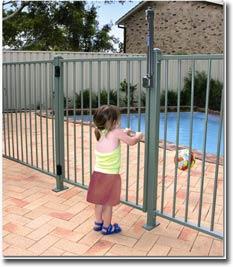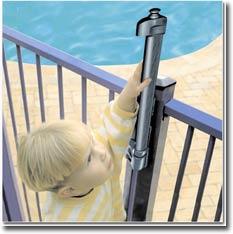Prevention of Pediatric Submersion Incidents in Apartment and Other Multi-family Complex Facilities
by Gerald M. Dworkin
April 13, 2005


Drowning is a significant health problem within the U.S. It is the 7th leading cause of unintentional injury deaths for people of all ages and is the 2nd leading cause of unintentional injury deaths for children 1 – 14 years of age. Approximately 300 – 500 child drownings occur annually, and for every drowning, there are 6 – 10 near-drownings resulting in permanent neurological impairment as a result of the submersion incident.
The majority of toddler drownings do not occur at beaches, but rather at home or apartment swimming pools, as well as buckets and bathtubs. The Big Head – Little Body Syndrome plays a big part in these tragic incidents because as the child investigates the water or attractions within the water, due to the size of his/her head in relation to the rest of the child’s body, because the child is top-heavy he falls over and is then immersed or submerged in the water leading to very tragic results.
Studies conducted by organizations such as the Consumer Product Safety Commission (CPSC), the Centers for Disease Control (CDC), the American Academy of Pediatrics (AAP), the American Trauma Society (ATS), and the National Spa and Pool Institute (NSPI) have identified the following facts related to child drownings:
- Young children are attracted to water;
- Toddlers are inquisitive and impulsive and lack a realistic sense of danger;
- Nearly half of the victims were last seen in the house and had been out of sight less than five minutes prior to the incident;
- Drowning is a silent death;
- Most of the victims were being supervised by one or both parents prior to the incident; and
- 69% of the children who became victims were not expected to be in or near the swimming pool at the time of the incident.
As a result of these studies, these same organizations, along with others (i.e. National Safe Kids, American Red Cross, National Safety Council) advocate the need to implement Layers of Protection in order to limit or delay child access to a swimming pool from the surrounding area. Layers of Protection are critical, not only for residential (private) swimming pools, but also for Class C Public Pools (i.e. hotels, motels, apartment and condominium or townhouse complexes, etc.) that may not be staffed with lifeguard personnel or attendants.
The leading contributing factor associated with pediatric submersion incidents, especially in residential and multi-family complex facilities is a lapse or lack in adult supervision. Therefore, apartment complex managers and operators must warn and educate their residents about the dangers associated with water and the need to provide vigilant and effective supervision of children anytime they are in and around the water. In addition, appropriate and effective Layers of Protection must be implemented in order to prevent children from gaining unauthorized access during brief lapses in adult supervision. The more layers that can be implemented, the less likely you are to experience a tragic incident.
For Public Swimming Pools, including Class C Public Pools, we advocate the following Layers of Protection:
- Adequate and effective adult supervision
- Isolation fencing (around all 4-sides at least 4′ high)
- Self-closing, self-latching and self-locking gates and/or access doors that required a keyed-entry system
- Gates and/or access doors open outward, away from the pool area
- Lifelines separate the shallow from the deep end of the swimming pool and serve as a handhold for distressed or drowning swimmers
- Colored depth lines differentiate the shallow from the deep end of the swimming pool
- Depth markers on the deck and vertical walls of the pool that accurately state the water’s depth
- “No Diving” signs prominently displayed around the pool in areas less than 9′ deep
- Warning and cautionary signs advocating the need to vigilantly supervise children at all times while they are in, on, and around the water
- Window locks on access windows allowing access to the pool area
- Alarms on doors and windows leading into the pool area
- Pool safety covers that cover the water when the pool is not in use
- Passive monitoring system that allows for front desk and office personnel to monitor the activities at the pool
Drowning and near-drowning are tragic incidents, especially when they involve young children. Most drowning and near-drowning incidents can be easily prevented, but apartment complex owners and operators must take an active role in the development and implementation of drowning prevention strategies.


